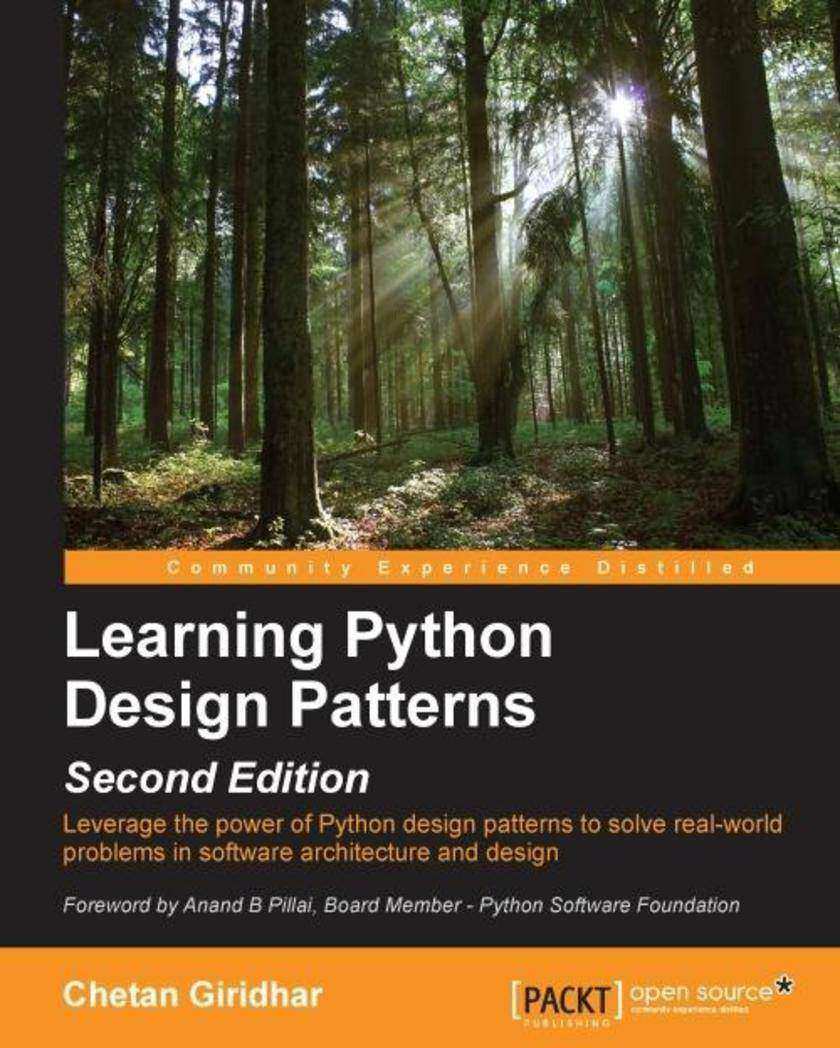
Learning Python Design Patterns - Second Edition
¥71.93
Leverage the power of Python design patterns to solve real-world problems in software architecture and designAbout This BookUnderstand the structural, creational, and behavioral Python design patternsGet to know the context and application of design patterns to solve real-world problems in software architecture, design, and application developmentGet practical exposure through sample implementations in Python v3.5 for the design patterns featuredWho This Book Is ForThis book is for Software architects and Python application developers who are passionate about software design. It will be very useful to engineers with beginner level proficiency in Python and who love to work with Python 3.5What You Will LearnEnhance your skills to create better software architectureUnderstand proven solutions to commonly occurring design issuesExplore the design principles that form the basis of software design, such as loose coupling, the Hollywood principle and the Open Close principle among othersDelve into the object-oriented programming concepts and find out how they are used in software applicationsDevelop an understanding of Creational Design Patterns and the different object creation methods that help you solve issues in software developmentUse Structural Design Patterns and find out how objects and classes interact to build larger applicationsFocus on the interaction between objects with the command and observer patternsImprove the productivity and code base of your application using Python design patternsIn DetailWith the increasing focus on optimized software architecture and design it is important that software architects think about optimizations in object creation, code structure, and interaction between objects at the architecture or design level. This makes sure that the cost of software maintenance is low and code can be easily reused or is adaptable to change. The key to this is reusability and low maintenance in design patterns.Building on the success of the previous edition, Learning Python Design Patterns, Second Edition will help you implement real-world scenarios with Python’s latest release, Python v3.5.We start by introducing design patterns from the Python perspective. As you progress through the book, you will learn about Singleton patterns, Factory patterns, and Fa?ade patterns in detail. After this, we’ll look at how to control object access with proxy patterns. It also covers observer patterns, command patterns, and compound patterns.By the end of the book, you will have enhanced your professional abilities in software architecture, design, and development.Style and approachThis is an easy-to-follow guide to design patterns with hands-on examples of real-world scenarios and their implementation in Python v3.5. Each topic is explained and placed in context, and for the more inquisitive, there are more details on the concepts used.
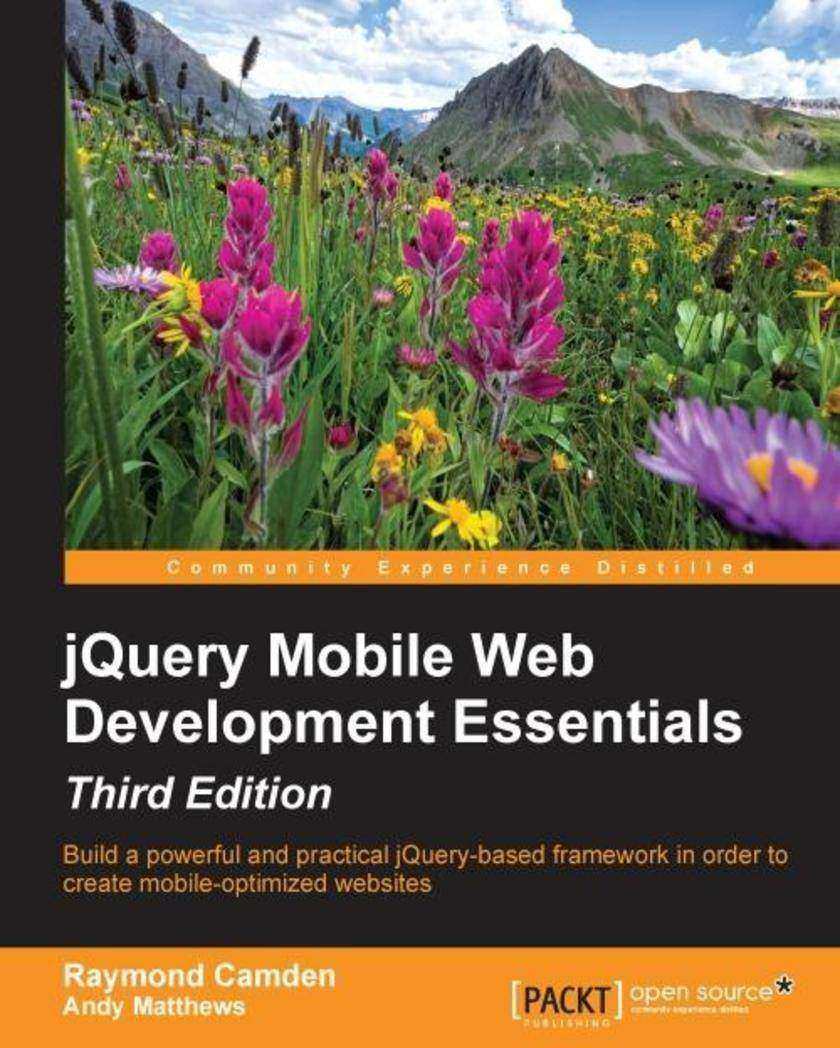
jQuery Mobile Web Development Essentials - Third Edition
¥80.65
Build a powerful and practical jQuery-based framework in order to create mobile-optimized websites About This Book Build websites with jQuery Mobile that work beautifully across a wide range of mobile devices Become a competent jQuery Mobile developer and learn the building blocks of jQuery Mobile’s component-driven design This book covers key concepts but with a focus on providing the practical skills required Who This Book Is For This book is for any web developer who is looking to create mobile-optimized websites. Basic knowledge of HTML is required. Minor familiarity with JavaScript would help but is not required. What You Will Learn Create mobile-optimized sites using simple HTML Structure your sites so users can browse them on mobile devices Find out how to work with multiple pages in the JQM framework and embed multiple pages in HTML files Enhance simple pages using various toolbars Include mobile-optimized forms for interactive sites Convert desktop sites into mobile versions Use HTML5’s local storage feature in jQuery Mobile to include persistent client-side storage Explore the rich sets of widgets and themes available and discover how to modify them for use in your jQuery Mobile site In Detail jQuery Mobile is a HTML5-based touch-optimized web framework. jQuery Mobile can be used to build responsive cross-platform websites and apps for a wide range of smartphones, tablets, and desktop devices. The jQuery Mobile framework can be integrated with other mobile app frameworks such as PhoneGap, IBM Worklight, and more. Introduction to jQuery Mobile explains how to add the framework to your HTML pages to create rich, mobile-optimized web pages with minimal effort. You’ll learn how to use jQuery Mobile’s automatic enhancements and configure the framework for customized, powerful mobile-friendly websites. We then dig into forms, events, and styling. You'll see how jQuery Mobile automatically enhances content, and will find out how to use the JavaScript API to build complex sites. We’ll introduce you to how jQuery Mobile can be themed as well looking into how JavaScript can be used for deep sets of customizations. The examples are ready to run and can be used to help kick-start your own site. Along the way, you will leverage all the concepts you learn to build three sample mobile applications. Style and approach Through a set of easy to follow instructions, we’ll show you how to use jQuery Mobile’s features one easy-to-use widget at a time. You’ll see examples for each feature as well as screenshots to demonstrate what they should look like on a mobile device. You can then take these example files and modify them as you learn to experiment.

Mastering Clojure
¥90.46
Understand the philosophy of the Clojure language and dive into its inner workings to unlock its advanced features, methodologies, and constructs About This Book Learn to handle data using sequences, reducers, and transducers in Clojure Explore the lesser known and more advanced features, constructs, and methodologies of the Clojure language and its ecosystem, such as asynchronous channels, actors, logic programming, and reactive programming Sharpen your Clojure skills through illustrative and comprehensive examples Who This Book Is For If you’re looking to learn more about the core libraries and dive deep into the Clojure language, then this book is ideal for you. Prior knowledge of the Clojure language is required. What You Will Learn Maximize the impact of parallelization, functional composition, and process transformation by composing reducers and transducers Process and manipulate data using sequences, reducers, and transducers in Clojure Modify and add features to the Clojure language using macros Explore the features of category theory and custom data sources for logic programming in Clojure Orchestrate parallelism and concurrency using built-in primitives as well as community libraries in Clojure Handle data with asynchronous and reactive programming methodologies and leverage it using the core.async library Test your code with unit tests, specs, and type checks to write testable code Troubleshoot and style your Clojure code to make it more maintainable In Detail Clojure is a general-purpose language from the Lisp family with an emphasis on functional programming. It has some interesting concepts and features such as immutability, gradual typing, thread-safe concurrency primitives, and macro-based metaprogramming, which makes it a great choice to create modern, performant, and scalable applications. Mastering Clojure gives you an insight into the nitty-gritty details and more advanced features of the Clojure programming language to create more scalable, maintainable, and elegant applications. You’ll start off by learning the details of sequences, concurrency primitives, and macros. Packed with a lot of examples, you’ll get a walkthrough on orchestrating concurrency and parallelism, which will help you understand Clojure reducers, and we’ll walk through composing transducers so you know about functional composition and process transformation inside out. We also explain how reducers and transducers can be used to handle data in a more performant manner. Later on, we describe how Clojure also supports other programming paradigms such as pure functional programming and logic programming. Furthermore, you’ll level up your skills by taking advantage of Clojure's powerful macro system. Parallel, asynchronous, and reactive programming techniques are also described in detail. Lastly, we’ll show you how to test and troubleshoot your code to speed up your development cycles and allow you to deploy the code faster. Style and approach This is an easy-to-follow project-based guide that throws you directly into the excitement of Clojure code. Mastering Clojure is for anyone who is interested in expanding their knowledge of language features and advanced functional programming.

Cisco UCS Cookbook
¥90.46
Over 40 practical recipes to get your hands dirty with the powerful Cisco UCS and overcome various challenges About This Book Master the skills of minimizing cost, enabling your business to work faster by reducing cycle times for reporting and improving overall revenue Work through hands-on recipes for efficient deployment approaches, see computing techniques, and explore new operational models with UCS Render a better work-flow management, ensure effective monitoring, and learn new deployment paradigms for the operational infrastructure with the help of this book Who This Book Is For This book is for competent system/network or storage administrators who are working with Cisco UCS, but now want to learn new ways to compute UCS. What You Will Learn Familiarize yourself with information on the latest information on memory management practices, virtualization architectures, and the specific technical advantages of UCS Get a concrete understanding of integrating processes and techniques to ensure effective convergence of LAN/SAN Get to know the best practices of Cisco UCS, EMC Storage, and VMware vSphere Master migrating data from other band servers or Blade to Cisco UCS Comprehend how to replicate and back up UCS to remote sites UCS Assimilate innovative techniques to deploy UCS to leverage its full potential Gather information on installing and configuring automatic and manual Pinning Discover ways to integrate a system in Cisco UCS In Detail Cisco Unified Computing System (UCS) is a data center server platform that is used for computing, deploying, and storing resources in data center environments. This cookbook aims to teach you about various tasks you can implement to improve your existing method of configuring and deploying UCS. You will start by learning how to upgrade your firmware on Brocade and Cisco Fibre Channel Switch and will move on to enhance your knowledge of LAN connectivity. We will then discuss how to configure Windows 2008 and 2012 local boot in Cisco UCS. Next, you will learn how to install the operating system on Cisco UCS and use Cisco UCS Power Calculator to calculate the UCS consumption. Finally, we’ll take a look at backup solutions. By the end of the book, you will know several ways to build and compute in data center environment using Cisco UCS. Style and approach This guide explains every task in a conversational and easy-to-follow style. You can open this book up to the task you want to learn and will be able to perform that task by the end of the recipe.
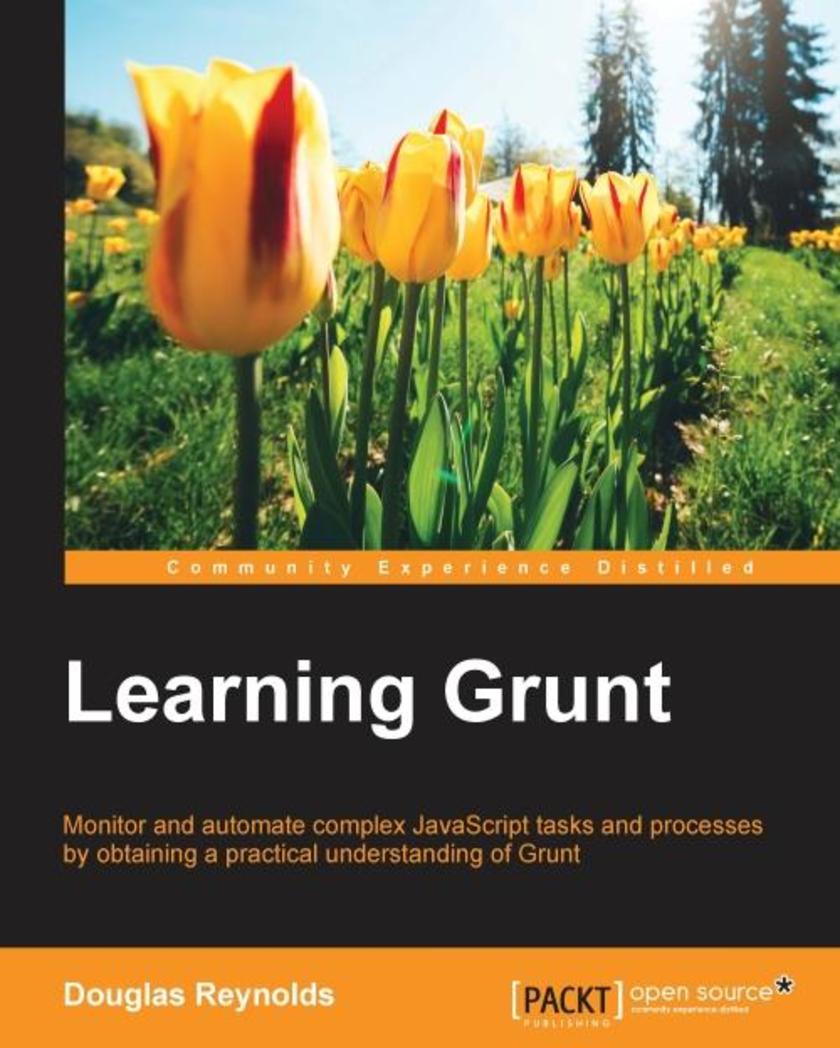
Learning Grunt
¥54.49
Monitor and automate complex JavaScript tasks and processes by obtaining a practical understanding of Grunt About This Book Gain a solid knowledge of Grunt to achieve better process management by improving consistency, productivity, reliability, and quality of code Install, configure, and use plugins into your project with this hands-on guide This step-by-step tutorial will walk you through practical examples of workflow automation Who This Book Is For If you are a JavaScript developer and want to learn project monitoring and automation using Grunt, then this book is for you. Basic knowledge of Node.js and Angular.js is assumed. However, no previous experience using Grunt.js is required. What You Will Learn Install and configure Grunt and its dependencies such as Node.js and Node Package Manager (NPM) Create a sample application using Angular.JS Configure plugins to perform various tasks that will benefit your project Explore the task-specific methods available through the Grunt API such as configuration, externals, events, and logging Set up tasks to automate the build process of the simple contact application Build, test, and refine a sample project Get general tips, tricks, and troubleshooting strategies to identify and solve common issues in Grunt Advance your knowledge of Grunt with concepts such as configuration variables and test automation In Detail With the increasing focus on task automation, the Grunt task runner is a vast platform that allows you to incorporate automation into your workflows. At the outset, you will learn how to use Node.js and NMP through an example. You will then find out how to build a sample app and the development environment for it. You will further delve into the implementation of Grunt plugins and the configuration of Grunt tasks. Furthermore, you will explore the various methods and packages for workflow automation. The final chapter will cover some advanced concepts, such as configuration variables and how to create a Grunt plugin. By the end of the book, you will have gained the fundamentals of Grunt and progressed through advanced concepts, including building a Grunt plugin. Style and approach This book is an easy-to-follow, step-by-step tutorial that provides explanations and examples of deploying Grunt from scratch.
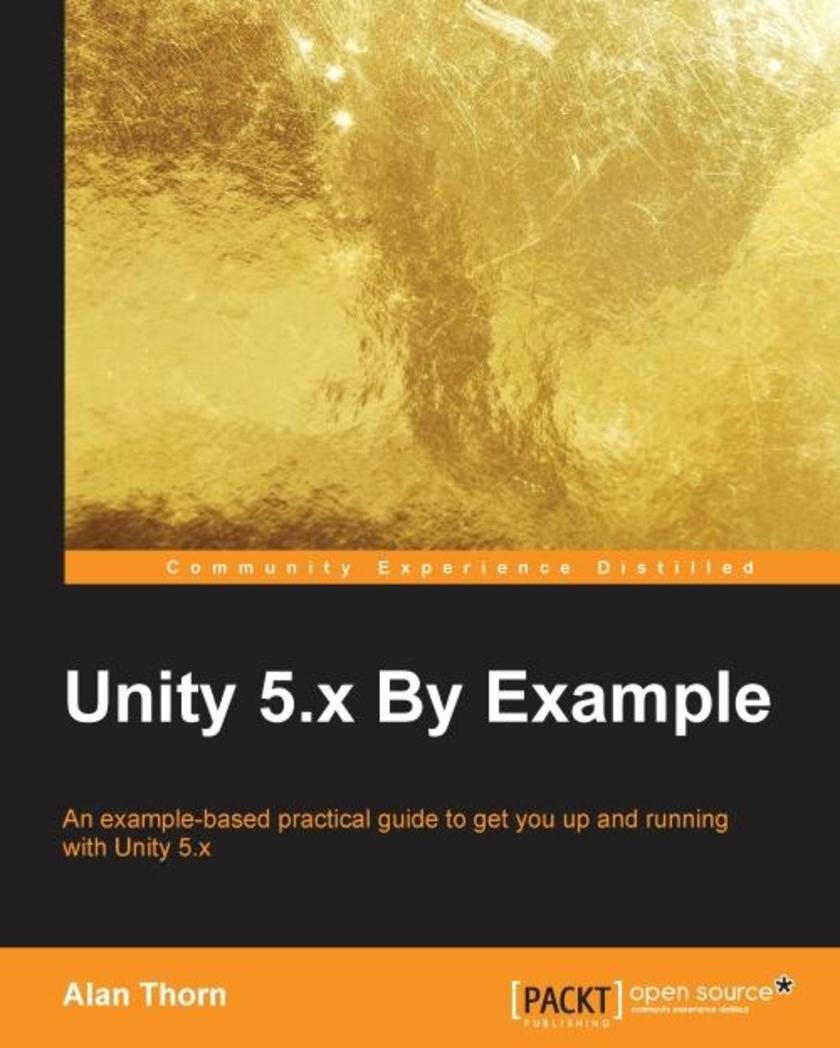
Unity 5.x By Example
¥90.46
An example-based practical guide to get you up and running with Unity 5.x About This Book The most updated resource on Unity 5.x with comprehensive discussion on all the new features of Unity 5.x Understand the core concepts surrounding Unity5 game development with this power-packed hands-on guide Brush up your existing game development skills and create games that have a brilliant gameplay using the excellent examples from this book Who This Book Is For The ideal target audience for this book would be game developers. They need not have previous experience with Unity since this book will cover all the basics about game development with unity. This would also be a very good resource for Unity developers who want to brush up their basic Unity skills and also get up and running with creating interesting games with Unity 5.x. What You Will Learn Understand core Unity concepts, such as game objects, components, and scenes Learn level design techniques for building immersive and interesting worlds Learn to make functional games with C# *ing Use the toolset creatively to build games of different themes and styles Learn to handle player controls and input functionality Dive into the process of working with terrains and world-creation tools Import custom content into Unity from third-party tools, such as Maya and Blender Get to grips with making both 2D and 3D games In Detail Unity is an exciting and popular engine in the game industry. Throughout this book, you’ll learn how to use Unity by making four fun game projects, from shooters and platformers to exploration and adventure games. Unity 5 By Example is an easy-to-follow guide for quickly learning how to use Unity in practical context, step by step, by making real-world game projects. Even if you have no previous experience of Unity, this book will help you understand the toolset in depth. You'll learn how to create a time-critical collection game, a twin-stick space shooter, a platformer, and an action-fest game with intelligent enemies. In clear and accessible prose, this book will present you with step-by-step tutorials for making four interesting games in Unity 5 and explain all the fundamental concepts along the way. Starting from the ground up and moving toward an intermediate level, this book will help you establish a strong foundation in making games with Unity 5. Style and approach This book would be a very unique resource for any game developer who wants to get up and running with Unity. The unique example based approach will take you through the most basic games towards the more complex ones and will gradually build your skill level.
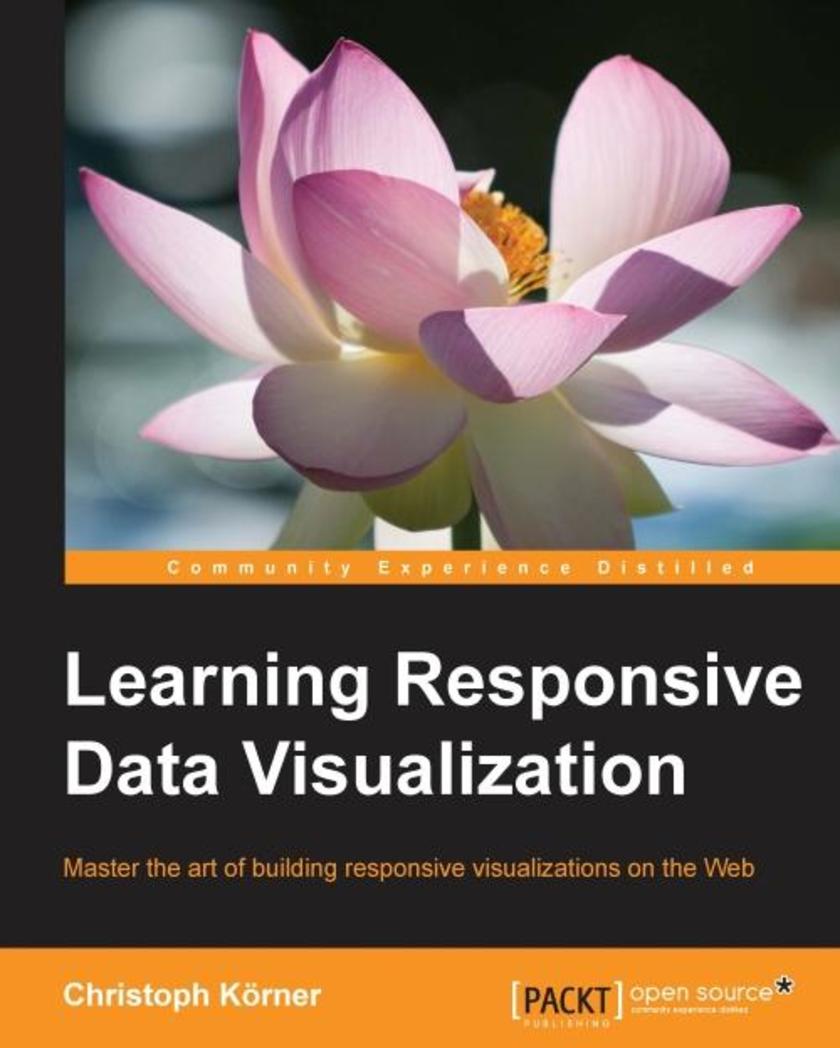
Learning Responsive Data Visualization
¥80.65
Master the art of building responsive visualizations on the Web About This Book Learn the techniques for building data visualizations that work well for all screen sizes Implement responsive techniques with popular libraries to get to grips with building responsive visualizations that work in the real world Incorporate responsive workflow in your data visualization process to build visualizations that take a mobile-first approach. Who This Book Is For Web developers and data science professionals who want to make their visualizations work for smaller screen sizes. Some basic knowledge of JavaScript and Data visualization is expected. What You Will Learn Get familiar with responsive design for data visualizations Understand the main concepts of D3.js to create interactive visualizations Unleash the power of Bootstrap to create stunning and responsive visualizations for all screen resolutions Implement Touch and Mouse interactions for mobile-first applications Design Transitions and Animations that impress in portrait and landscape Build a Responsive World Map using GeoJSON and D3.js In Detail Using D3.js and Responsive Design principles, you will not just be able to implement visualizations that look and feel awesome across all devices and screen resolutions, but you will also boost your productivity and reduce development time by making use of Bootstrap—the most popular framework for developing responsive web applications. This book teaches the basics of scalable vector graphics (SVG), D3.js, and Bootstrap while focusing on Responsive Design as well as mobile-first visualizations; the reader will start by discovering Bootstrap and how it can be used for creating responsive applications, and then implement a basic bar chart in D3.js. You will learn about loading, parsing, and filtering data in JavaScript and then dive into creating a responsive visualization by using Media Queries, responsive interactions for Mobile and Desktop devices, and transitions to bring the visualization to life. In the following chapters, we build a fully responsive interactive map to display geographic data using GeoJSON and set up integration testing with Protractor to test the application across real devices using a mobile API gateway such as AWS Device Farm. You will finish the journey by discovering the caveats of mobile-first applications and learn how to master cross-browser complications. Style and approach As the world shifts to mobile devices for consuming data on the Web, developers are faced with the unique challenge of making data visualizations work for their smaller screens. The growth of responsive web design enabled developers to adopt page layouts and media for smaller screens, but there is still little information available on how to adapt data visualizations for the smaller screens. This book fills this important gap and shows how responsive web design principles can be extended to create visualizations that work well regardless of the screen size, thereby allowing developers to build user-friendly visualizations that work well on all devices. In addition to covering some of the popular techniques and design patterns for building responsive visualizations, the book also shows readers how to implement these techniques with the help of some popular tools and libraries.
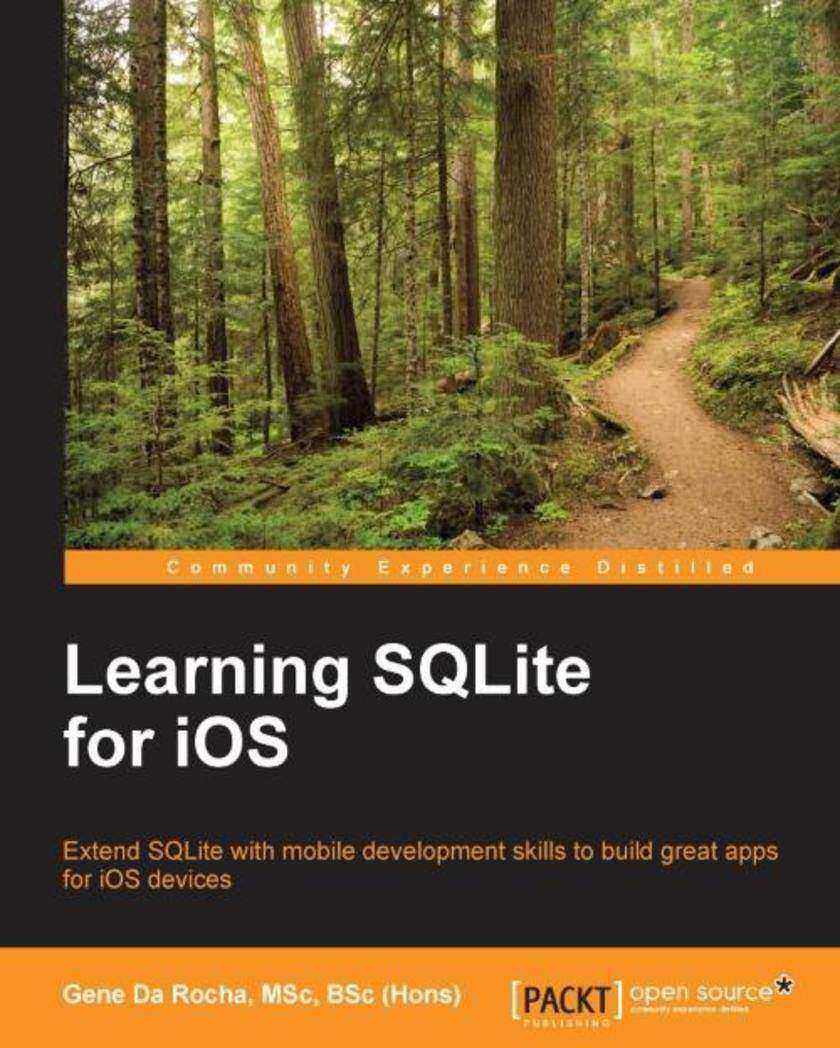
Learning SQLite for iOS
¥54.49
Extend SQLite with mobile development skills to build great apps for iOS devices About This Book Implement Swift code using SQLite statements Learn the background to SQL and SQLite for mobile development, its statements, and command features through practical examples Extend the standard SQLite functionality and increase your software creation portfolio Who This Book Is For This book is intended for those who want to learn about SQLite and how to develop apps in Swift or HTML5 using SQLite. Whether you are an expert Objective-C programmer or new to this platform, you'll learn quickly, grasping the code in real-world apps to use Swift. What You Will Learn Explore Swift's basic language statements Connect to SQLite and execute SQL statements Extend the SQLite language to create your own software extensions Use HTML5 with Phonegap on iOS Set up a Swift project using XCode with SQLite Administer SQLite databases in an easy and effective way In Detail The ability to use SQLite with iOS provides a great opportunity to build amazing apps. Apple's iOS SDK provides native support for SQLite databases. This combination offers the potential to create powerful, data-persistent applications. This book starts with the architecture of SQLite database and introduces you to concepts in SQL . You will find yourself equipped to design your own database system, administer it, and maintain it. Further, you will learn how to operate your SQLite databases smoothly using SQL commands. You will be able to extend the functionality of SQLite by using its vast arsenal of C API calls to build some interesting, exciting, new, and intelligent data-driven applications. Understand how Xcode, HTML5, and Phonegap can be used to build a cross-platform modern app which can benefit from all these technologies - all through creating a complete, customizable application skeleton that you can build on for your own apps. Style and approach This book is a practical and comprehensive guide to developing applications using SQLite and iOS.

Building a Pentesting Lab for Wireless Networks
¥80.65
Build your own secure enterprise or home penetration testing lab to dig into the various hacking techniques About This Book Design and build an extendable penetration testing lab with wireless access suitable for home and enterprise use Fill the lab with various components and customize them according to your own needs and skill level Secure your lab from unauthorized access and external attacks Who This Book Is For If you are a beginner or a security professional who wishes to learn to build a home or enterprise lab environment where you can safely practice penetration testing techniques and improve your hacking skills, then this book is for you. No prior penetration testing experience is required, as the lab environment is suitable for various skill levels and is used for a wide range of techniques from basic to advance. Whether you are brand new to online learning or you are a seasoned expert, you will be able to set up your own hacking playground depending on your tasks. What You Will Learn Determine your needs and choose the appropriate lab components for them Build a virtual or hardware lab network Imitate an enterprise network and prepare intentionally vulnerable software and services Secure wired and wireless access to your lab Choose a penetration testing framework according to your needs Arm your own wireless hacking platform Get to know the methods to create a strong defense mechanism for your system In Detail Starting with the basics of wireless networking and its associated risks, we will guide you through the stages of creating a penetration testing lab with wireless access and preparing your wireless penetration testing machine. This book will guide you through configuring hardware and virtual network devices, filling the lab network with applications and security solutions, and making it look and work like a real enterprise network. The resulting lab protected with WPA-Enterprise will let you practice most of the attack techniques used in penetration testing projects. Along with a review of penetration testing frameworks, this book is also a detailed manual on preparing a platform for wireless penetration testing. By the end of this book, you will be at the point when you can practice, and research without worrying about your lab environment for every task. Style and approach This is an easy-to-follow guide full of hands-on examples and recipes. Each topic is explained thoroughly and supplies you with the necessary configuration settings. You can pick the recipes you want to follow depending on the task you need to perform.

Creating Dynamic UIs with Android Fragments - Second Edition
¥54.49
Create engaging apps with fragments to provide a rich user interface that dynamically adapts to the individual characteristics of your customers’ tablets and smartphones About This Book From an eminent author comes a book that will help you create engaging apps that dynamically adapt to individual device characteristics The only book that includes the latest fragment-oriented features and their role in Material design This book provides code-intensive discussions and detailed examples that help you understand better and learn faster. Who This Book Is For This book is for developers with a basic understanding of Android programming who would like to improve the appearance and usability of their applications by creating a more interactive user experience and dynamically adaptive UIs; providing better support for tablets and smartphones in a single app; and reducing the complexity of managing app UIs. What You Will Learn Learn the role and capabilities of fragments Use Android Studio's fragment-oriented features Create an app UI that works effectively on smartphones and tablets Manage the creation and life cycle of fragments Dynamically manage fragments using the FragmentTransaction class Learn the application design for communicating between fragments Leverage fragments when implementing applications that take advantage of the latest features of Material Design In Detail Today’s users expect mobile apps to be dynamic and highly interactive, with rich navigation features. These same apps must look fantastic whether running on a medium-resolution smartphone or high-resolution tablet. Fragments provide the toolset we need to meet these user expectations by enabling us to build our applications out of adaptable components that take advantage of the rich capabilities of each individual device and automatically adapt to their differences. This book looks at the impact fragments have on Android UI design and their role in both simplifying many common UI challenges and in providing best practices for incorporating rich UI behaviors. We look closely at the roll of fragment transactions and how to work with the Android back stack. Leveraging this understanding, we explore several specialized fragment-related classes such as ListFragment and DialogFragment. We then go on to discuss how to implement rich navigation features such as swipe-based screen browsing, and the role of fragments when developing applications that take advantage of the latest aspects of Material Design. You will learn everything you need to provide dynamic, multi-screen UIs within a single activity, and the rich UI features demanded by today’s mobile users. Style and approach A fast-paced learning guide that gives a hands-on, code-intensive approach with a focus on real-world applications.
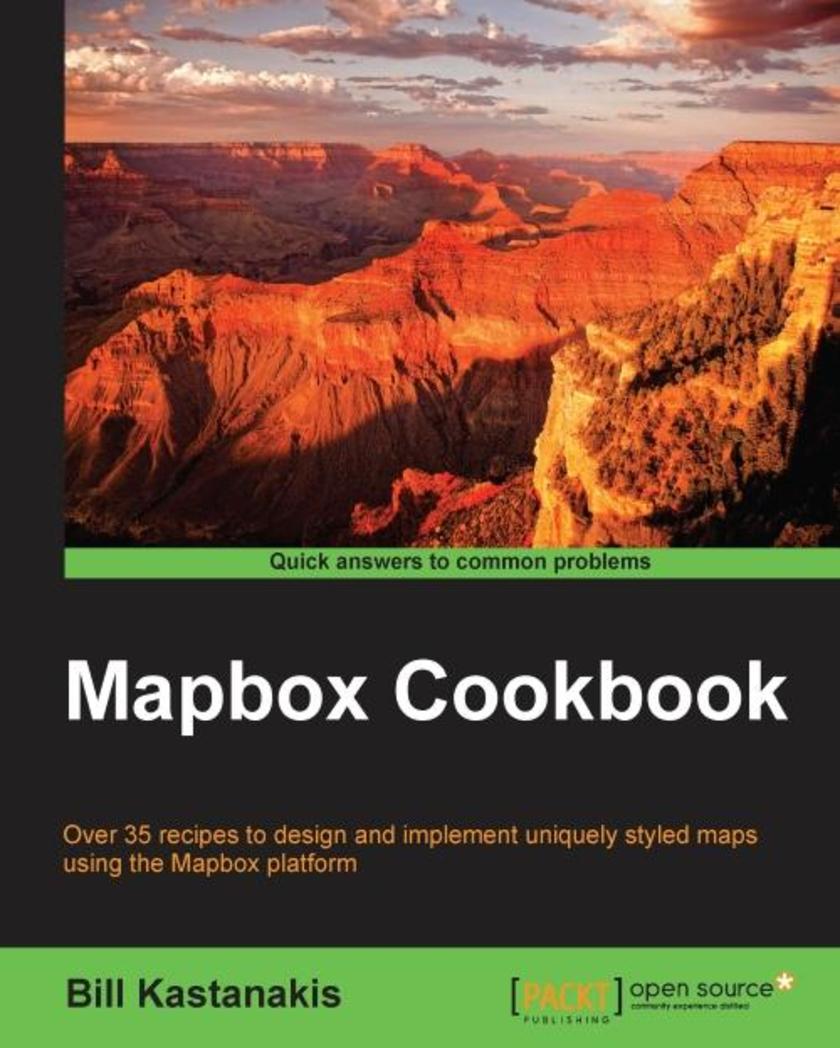
Mapbox Cookbook
¥71.93
Over 35 recipes to design and implement uniquely styled maps using the Mapbox platform About This Book Design and develop beautifully styled maps using TileMill, MapBox Studio, and CartoCSS Get to grips with the mapbox.js and Leaflet to create visually stunning web and mobile applications An easy-to-follow, quick reference guide to integrate powerful APIs and services like Foursquare, Fusion Tables, Geoserver, and CartoDB to populate your maps Who This Book Is For If you are a web developer seeking for GIS expertise on how to create, style, and publish interactive and unique styled maps, then this book is for you. Basic knowledge of programming and java*s is assumed. What You Will Learn Get accustomed to the MapBox Editor to visually style your maps Learn everything about CartoCSS, and how it will help you fine tune your styled maps Use MapBox Studio and Tilemill to generate your own tiles and vector maps Publish your maps using a variety of technologies like node.js, PHP, and Geoserver Integrate with third party APIs and services to populate your maps with public or private data Create many different map visualization styles like choropleth and heat maps, add interactivity, and even learn how to animate data over time Work with many different data formats and external services to create robust maps Learn to use MapBox GL to create a mobile application In Detail Maps are an essential element in today’s location aware applications. Right from displaying earth surface information to creating thematic maps displaying plethora of information, most of the developers lack the necessary knowledge to create customizable maps with combination of various tools and libraries. The MapBox platform is one such platform which offers all the tools and API required to create and publish a totally customizable map. Starting with building your first map with the online MapBox Editor, we will take you all the way to building advanced web and mobile applications with totally customizable map styles. Through the course of chapters we’ll learn CartoCSS styling language and understand the various components of MapBox platform and their corresponding JavaScript API. In the initial few chapters we will dive deeper into the TileMill and MapBox Studio components of MapBox and use them to generate custom styled map tiles and vector maps. Furthermore, we will publish these custom maps using PHP, node.js and third party tools like Geoserver. We’ll also learn to create different visualizations and map styles like a choropleth map, a heat map and add user interactivity using a UFTGrid. Moving on, we dive into advanced concepts and focus on integration with third party services like Foursquare, Google FusionTables, CartoDB, and Torque to help you populate and even animate your maps. In the final chapter we’ll learn to use the Mapbox SDK to create and publish interactive maps for the iOS platform. By the end of this book, you will learn about MapBox GL and how to create a fully functional, location-aware mobile app, using the maps styles created in the recipes. Style and approach An easy-to-use recipe driven book that will not just serve code samples, but also explains all the theory and concepts required to fully understand each recipe.
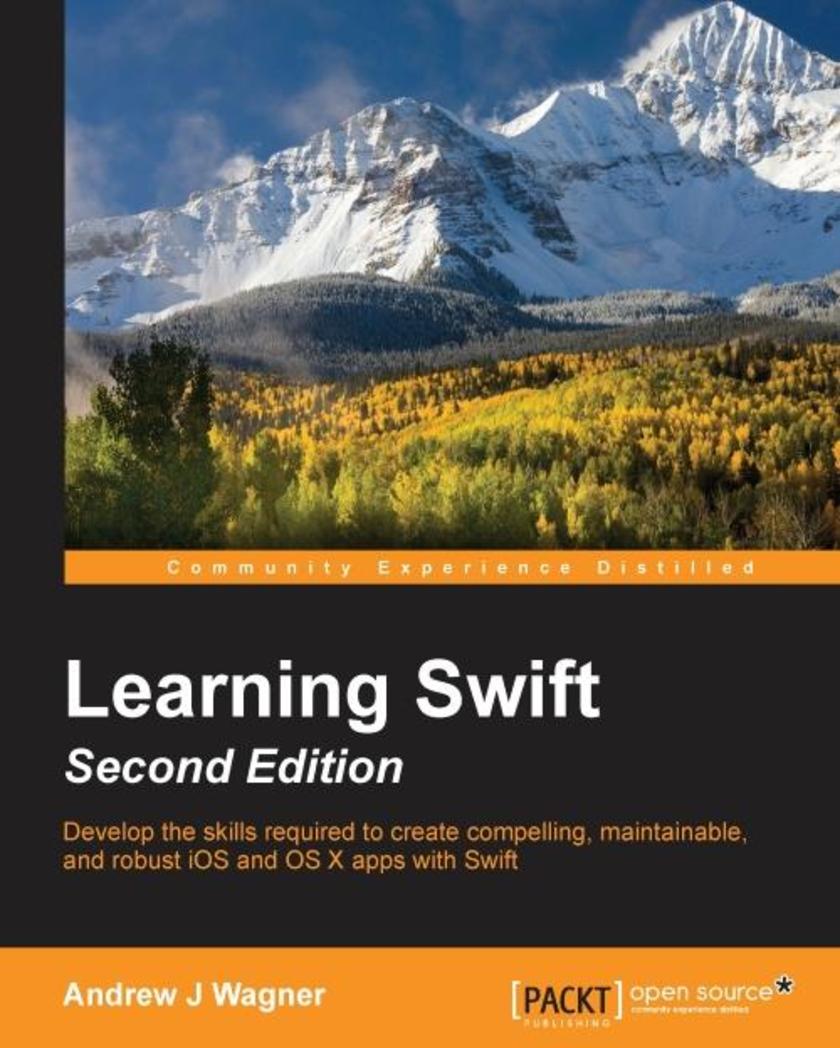
Learning Swift - Second Edition
¥71.93
Develop the skills required to create compelling, maintainable, and robust iOS and OS X apps with Swift About This Book Write expressive, understandable, and maintainable Swift 2 code with this hands-on tutorial Unveil the complex underpinnings of Swift to turn your app ideas into reality This book is packed with real-life examples to help you implement concepts as you learn Who This Book Is For If you are looking to build iOS or OS X apps using the most modern technology, this book is ideal for you. You will find this book especially useful if you are new to programming or if you are yet to develop for iOS or OS X. No prior programming exposure is required. What You Will Learn Form a solid understanding of the Swift 2 language Get to know the practical aspects of how a computer program actually works Understand the paradigms used by Apple’s frameworks so you are not intimidated by them Utilize the vast resources written in Objective-C to better inform your Swift programming Develop a basic portfolio of Swift code by learning the critical concepts Experience both object-oriented and functional programming Get to know the new coding techniques made available by Swift 2 Discover resources to ensure you never stop becoming a better developer In Detail Swift is Apple’s new programming language and the future of iOS and OS X app development. It is a high-performance language that feels like a modern *ing language. On the surface, Swift is easy to jump into, but it has complex underpinnings that are critical to becoming proficient at turning an idea into reality. This book is an approachable, step-by-step introduction into programming with Swift for everyone. It begins by giving you an overview of the key features through practical examples and progresses to more advanced topics that help differentiate the proficient developers from the mediocre ones. It covers important concepts such as Variables, Optionals, Closures, Generics, and Memory Management. Mixed in with those concepts, it also helps you learn the art of programming such as maintainability, useful design patterns, and resources to further your knowledge. This all culminates in writing a basic iOS app that will get you well on your way to turning your own app ideas into reality. Style and approach This is an approachable, step-by-step guide to programming in Swift 2. Each topic is separated into compressible sections that are full of practical examples and easy-to-understand explanations. Each section builds on the previous topics so you can develop a proficient and comprehensive understanding of app development in Swift 2.
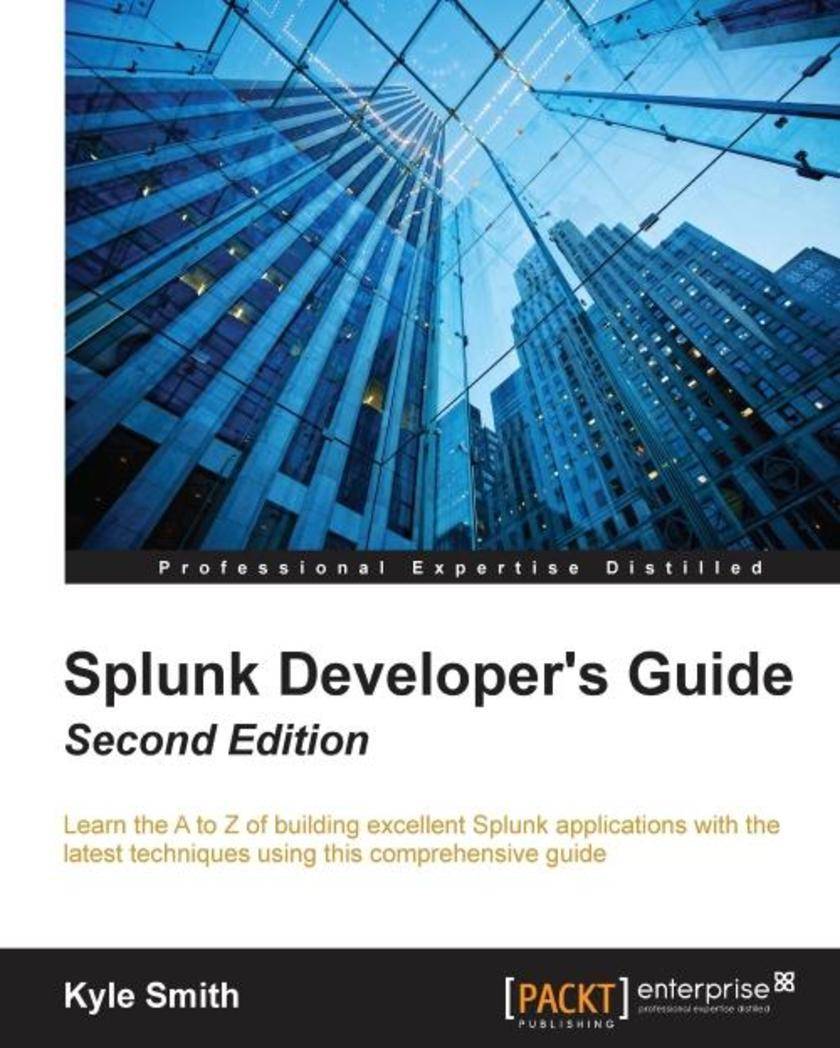
Splunk Developer's Guide - Second Edition
¥80.65
Learn the A to Z of building excellent Splunk applications with the latest techniques using this comprehensive guideAbout This BookThis is the most up-to-date book on Splunk 6.3 for developersGet ahead of being just a Splunk user and start creating custom Splunk applications as per your needsYour one-stop-solution to Splunk application developmentWho This Book Is ForThis book is for those who have some familiarity with Splunk and now want to learn how to develop an efficient Splunk application. Previous experience with Splunk, writing searches, and designing basic dashboards is expected.What You Will LearnImplement a Modular Input and a custom D3 data visualizationCreate a directory structure and set view permissionsCreate a search view and a dashboard view using advanced XML modulesEnhance your application using eventtypes, tags, and macrosPackage a Splunk application using best practicesPublish a Splunk application to the Splunk communityIn DetailSplunk provides a platform that allows you to search data stored on a machine, analyze it, and visualize the analyzed data to make informed decisions. The adoption of Splunk in enterprises is huge, and it has a wide range of customers right from Adobe to Dominos. Using the Splunk platform as a user is one thing, but customizing this platform and creating applications specific to your needs takes more than basic knowledge of the platform.This book will dive into developing Splunk applications that cater to your needs of making sense of data and will let you visualize this data with the help of stunning dashboards.This book includes everything on developing a full-fledged Splunk application right from designing to implementing to publishing. We will design the fundamentals to build a Splunk application and then move on to creating one. During the course of the book, we will cover application data, objects, permissions, and more. After this, we will show you how to enhance the application, including branding, workflows, and enriched data. Views, dashboards, and web frameworks are also covered.This book will showcase everything new in the latest version of Splunk including the latest data models, alert actions, XML forms, various dashboard enhancements, and visualization options (with D3). Finally, we take a look at the latest Splunk cloud applications, advanced integrations, and development as per the latest release.Style and approachThis book is an easy-to-follow guide with lots of tips and tricks to help you master all the concepts necessary to develop and deploy your Splunk applications.
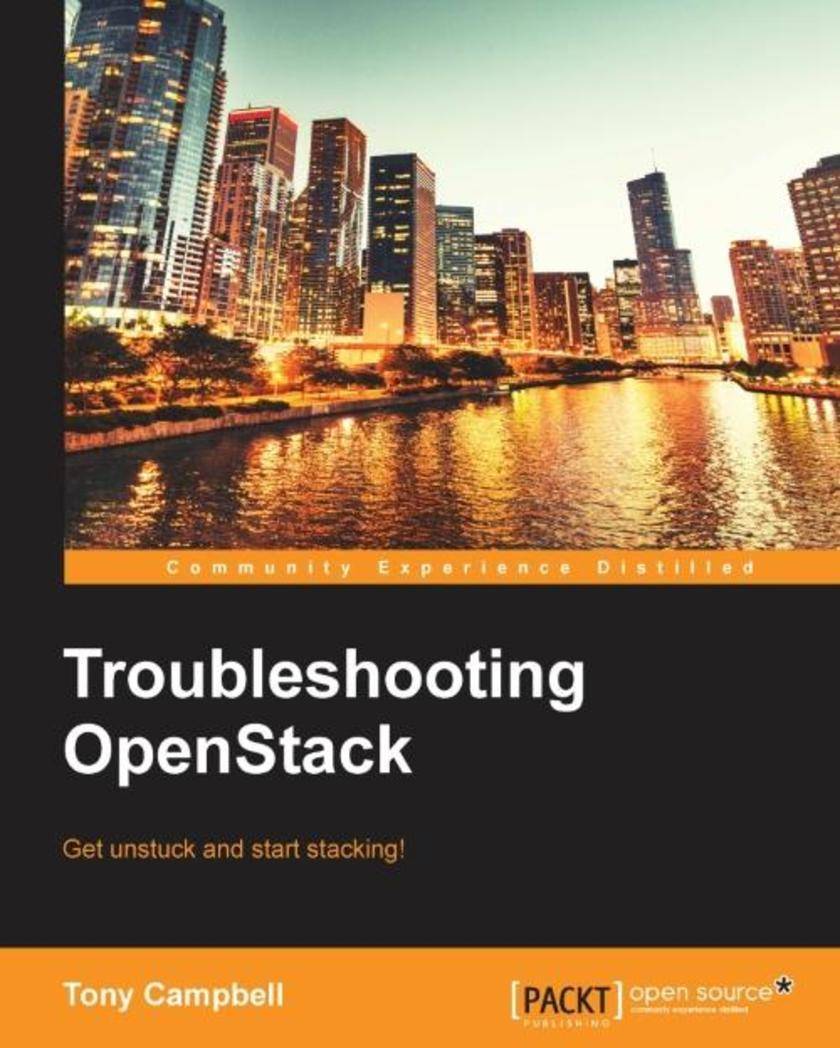
Troubleshooting OpenStack
¥54.49
Get unstuck and start stacking! About This Book Easily fix the nagging problems that commonly plague OpenStack and become the go-to person in your organization Get better equipped to troubleshoot and solve common problems in performance, availability, and automation that confront production-ready OpenStack environments Save time and decrease frustration by solving significant issues that arise from OpenStack deployments pertaining to storage and networking Who This Book Is For You will need a basic understanding of OpenStack, Linux, and Cloud computing. If you have an understanding of Linux, this book will help you leverage that knowledge in the world of OpenStack, giving you confidence to tackle most issues that may arise. What You Will Learn Diagnose and remediate authentication and authorization problems in Keystone Fix common issues with images served through Glance Master the art of troubleshooting Neutron networking Navigate and overcome problems with Nova Troubleshoot and resolve Cinder block storage issues Identify and correct Swift object storage problems Isolate and fix issues caused by Heat orchestration Leverage Ceilometer and other metering and monitoring tools for effective troubleshooting In Detail OpenStack is a collection of software projects that work together to provide a cloud fabric. OpenStack is one of the fastest growing open source projects in history that unlocks cloud computing for everyone. With OpenStack, you are able to create public or private clouds on your own hardware. The flexibility and control afforded by OpenStack puts the cloud within reach of anyone willing to learn this technology. Starting with an introduction to OpenStack troubleshooting tools, we’ll walk through each OpenStack service and how you can quickly diagnose, troubleshoot, and correct problems in your OpenStack. Understanding the various projects and how they interact is essential for anyone attempting to troubleshoot an OpenStack cloud. We will start by explaining each of the major components and the dependencies between them, and move on to show you how to identify and utilize an effective set of OpenStack troubleshooting tools and fix common Keystone problems. Next, we will expose you to common errors and problems you may encounter when using the OpenStack Block Storage service (Cinder). We will then examine Heat, the OpenStack Orchestration Service, where you will learn how to trace errors, determine their root cause, and effectively correct the issue. Finally, you will get to know the best practices to architect your OpenStack cloud in order to achieve optimal performance, availability, and reliability. Style and approach This is straight-to-the point guide to fixing your OpenStack cluster. Common problems are identified and suggestions to resolve these problems are presented in a simple, easy-to-understand manner.
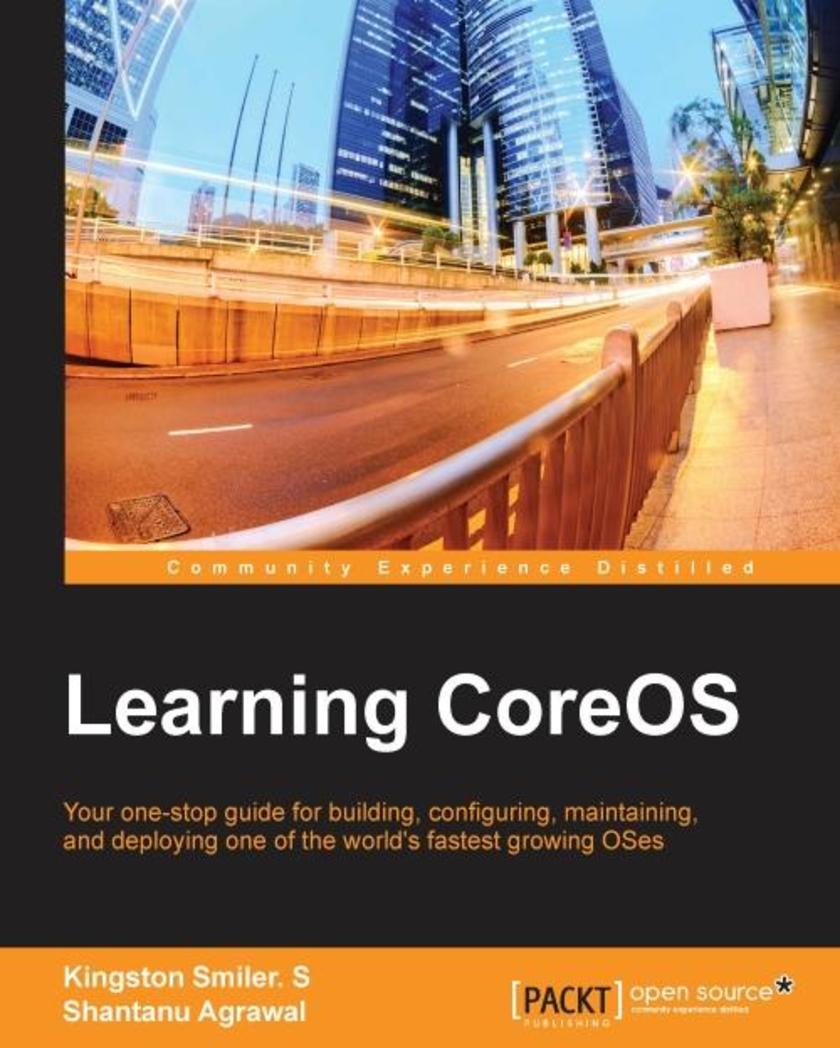
Learning CoreOS
¥71.93
Your one-stop guide for building, configuring, maintaining, and deploying one of the world's fastest growing OSes About This Book Understand the features of CoreOS and learn to administrate and secure a CoreOS environment Develop, test, and deploy cloud services and applications more quickly and efficiently inside lightweight containers using CoreOS This is a complete tutorial on CoreOS, which is the preferred OS for cloud computing as it contains components that facilitate cloud management Who This Book Is For This book is for cloud or enterprise administrators and application developers who would like to gain knowledge about CoreOS to deploy a cloud application or micro-services on a cluster of cloud servers. It is also aimed at administrators with basic networking experience. You do not need to have any knowledge of CoreOS. What You Will Learn Understand the benefits of CoreOS as a cloud orchestration platform Learn about lightweight containers and various container frameworks such as Docker and RKT in CoreOS Manage services and containers across cluster using Fleet and systemd Set up a CoreOS environment using Vagrant Create and manage CoreOS clusters Discover the service parameters using etcd Find out about chaining services running on the cluster using Flannel / Rudder and Weave Create a virtual tenant network and service chaining using OVS In Detail CoreOS is an open source operating system developed upon the Linux kernel. The rise of CoreOS is directly related to the rise of Docker (a Linux container management system). It is a minimal operating system layer and takes a different approach to automating the deployment of containers. The major difference between CoreOS and other Linux distributions is that CoreOS was designed to deploy hundreds of servers. CoreOS immensely helps the users to create systems, which are easy to scale and manage, making life easier for all, be it developer, QA, or deployer. This book is all about setting up, deploying, and using CoreOS to manage clusters and clouds. It will help you understand what CoreOS is and its benefits as a cloud orchestration platform. First, we’ll show you how to set up a simple CoreOS instance with single node in the cluster and how to run a Docker container inside the CoreOS instance. Next, you’ll be introduced to Fleet and systemd, and will deploy and distribute Docker services across different nodes in cluster using Fleet. Later, you’ll be briefed about running services in a cluster with constraints, publishing the services already running on the cluster to new services, and making your services interact with each other. We conclude by teaching you about advanced container networking. By the end of the book, you will know the salient features of CoreOS and will be able to deploy, administrate, and secure a CoreOS environment. Style and approach This practical guide covers the basics and advanced topics related to CoreOS and lightweight containers. The topics are covered in an easy-to-follow manner with each feature explained in detail, beginning with a brief overview and followed by an explanation of its corresponding configuration files.
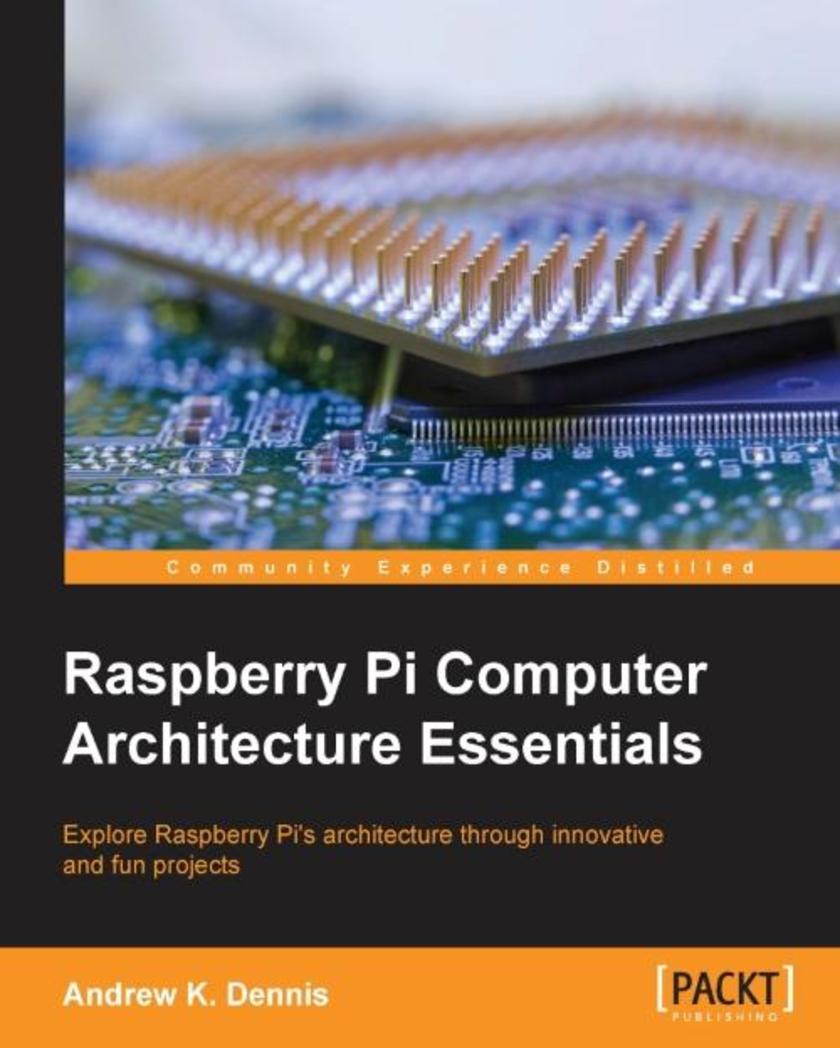
Raspberry Pi Computer Architecture Essentials
¥71.93
Explore Raspberry Pi's architecture through innovative and fun projects About This Book Explore Raspberry Pi 2’s hardware through the Assembly, C/C++, and Python programming languages Experiment with connecting electronics up to your Raspberry Pi 2 and interacting with them through software Learn about the Raspberry Pi 2 architecture and Raspbian operating system through innovative projects Who This Book Is For Raspberry Pi Computer Architecture Essentials is for those who are new and those who are familiar with the Raspberry Pi. Each topic builds upon earlier ones to provide you with a guide to Raspberry Pi’s architecture. From the novice to the expert, there is something for everyone. A basic knowledge of programming and Linux would be helpful but is not required. What You Will Learn Set up your Raspberry Pi 2 and learn about its hardware Write basic programs in Assembly Language to learn about the ARM architecture Use C and C++ to interact with electronic components Find out about the Python language and how to use it to build web applications Interact with third-party microcontrollers Experiment with graphics and audio programming Expand Raspberry Pi 2’s storage mechanism by using external devices Discover Raspberry Pi 2’s GPIO pins and how to interact with them In Detail With the release of the Raspberry Pi 2, a new series of the popular compact computer is available for you to build cheap, exciting projects and learn about programming. In this book, we explore Raspberry Pi 2’s hardware through a number of projects in a variety of programming languages. We will start by exploring the various hardware components in detail, which will provide a base for the programming projects and guide you through setting up the tools for Assembler, C/C++, and Python. We will then learn how to write multi-threaded applications and Raspberry Pi 2’s multi-core processor. Moving on, you’ll get hands on by expanding the storage options of the Raspberry Pi beyond the SD card and interacting with the graphics hardware. Furthermore, you will be introduced to the basics of sound programming while expanding upon your knowledge of Python to build a web server. Finally, you will learn to interact with the third-party microcontrollers. From writing your first Assembly Language application to programming graphics, this title guides you through the essentials. Style and approach This book takes a step-by-step approach to exploring Raspberry Pi’s architecture through projects that build upon each other. Each project provides you with new information on how to interact with an aspect of the Raspberry Pi and Raspbian operating system, providing a well-rounded guide.
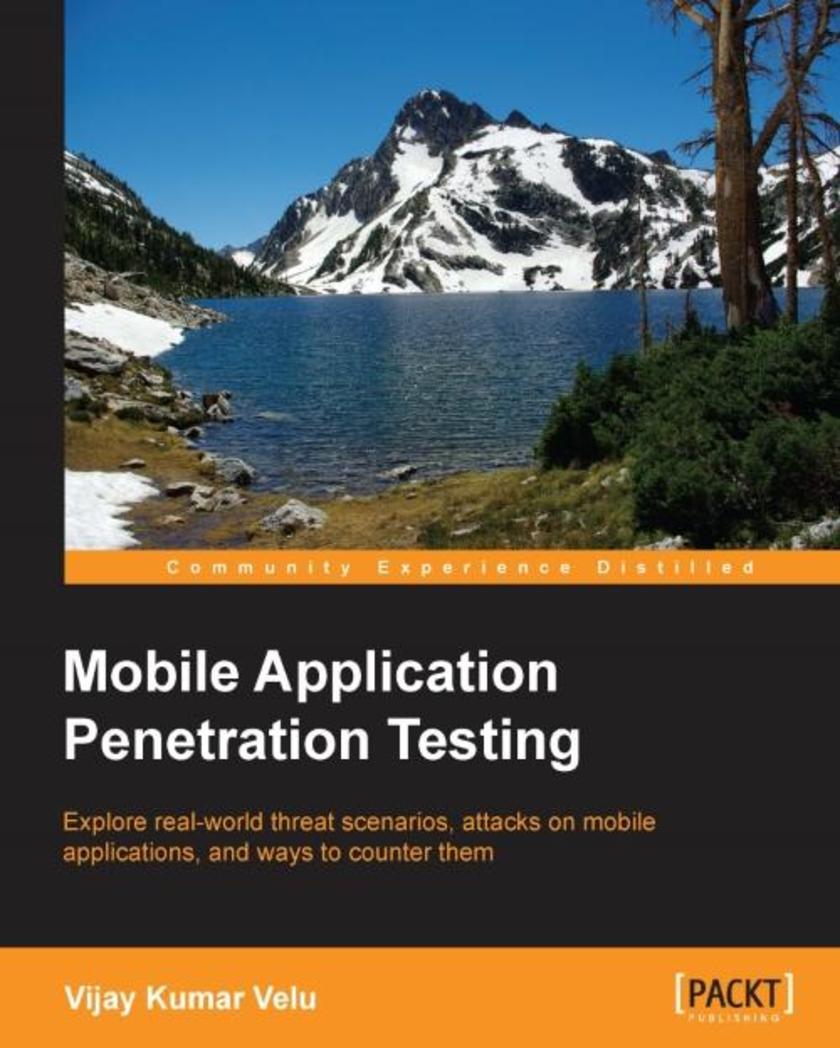
Mobile Application Penetration Testing
¥90.46
Explore real-world threat scenarios, attacks on mobile applications, and ways to counter them About This Book Gain insights into the current threat landscape of mobile applications in particular Explore the different options that are available on mobile platforms and prevent circumventions made by attackers This is a step-by-step guide to setting up your own mobile penetration testing environment Who This Book Is For If you are a mobile application evangelist, mobile application developer, information security practitioner, penetration tester on infrastructure web applications, an application security professional, or someone who wants to learn mobile application security as a career, then this book is for you. This book will provide you with all the skills you need to get started with Android and iOS pen-testing. What You Will Learn Gain an in-depth understanding of Android and iOS architecture and the latest changes Discover how to work with different tool suites to assess any application Develop different strategies and techniques to connect to a mobile device Create a foundation for mobile application security principles Grasp techniques to attack different components of an Android device and the different functionalities of an iOS device Get to know secure development strategies for both iOS and Android applications Gain an understanding of threat modeling mobile applications Get an in-depth understanding of both Android and iOS implementation vulnerabilities and how to provide counter-measures while developing a mobile app In Detail Mobile security has come a long way over the last few years. It has transitioned from "should it be done?" to "it must be done!"Alongside the growing number of devises and applications, there is also a growth in the volume of Personally identifiable information (PII), Financial Data, and much more. This data needs to be secured. This is why Pen-testing is so important to modern application developers. You need to know how to secure user data, and find vulnerabilities and loopholes in your application that might lead to security breaches. This book gives you the necessary skills to security test your mobile applications as a beginner, developer, or security practitioner. You'll start by discovering the internal components of an Android and an iOS application. Moving ahead, you'll understand the inter-process working of these applications. Then you'll set up a test environment for this application using various tools to identify the loopholes and vulnerabilities in the structure of the applications. Finally, after collecting all information about these security loop holes, we'll start securing our applications from these threats. Style and approach This is an easy-to-follow guide full of hands-on examples of real-world attack simulations. Each topic is explained in context with respect to testing, and for the more inquisitive, there are more details on the concepts and techniques used for different platforms.
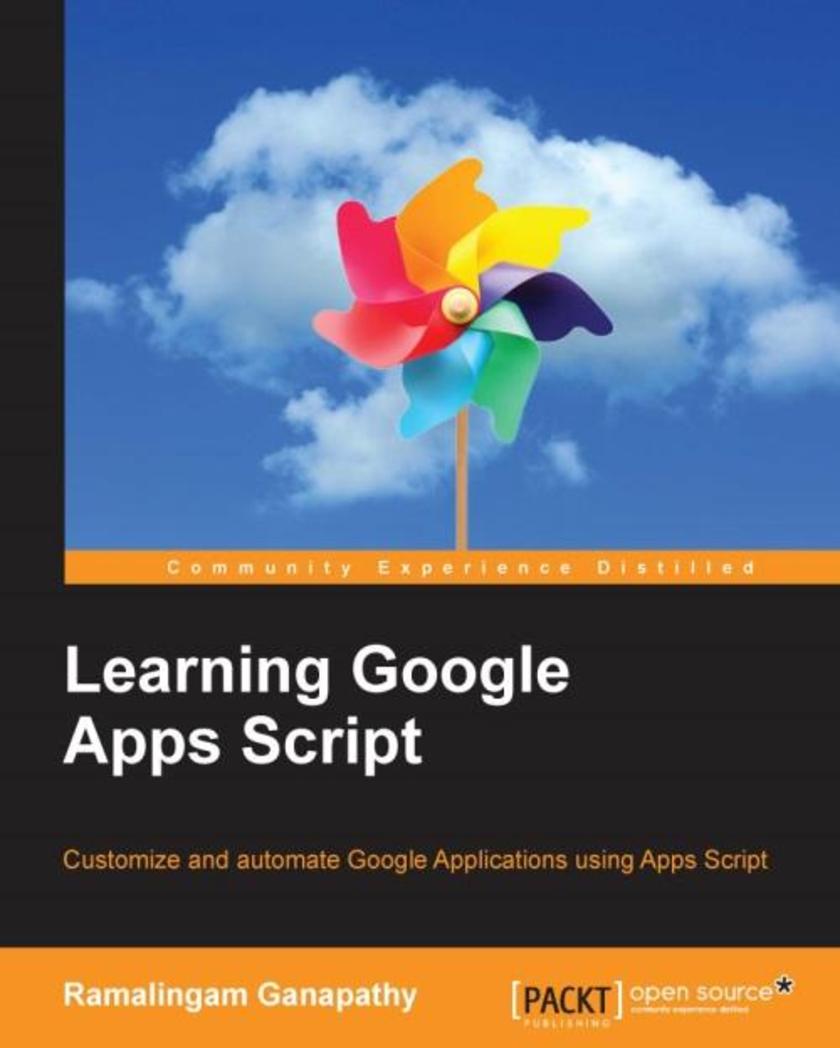
Learning Google Apps Script
¥71.93
Customize and automate Google Applications using Apps Script About This Book Gain insight into customizing and automating Google applications with JavaScript Create add-ons for Google Sheets, Docs, or Forms; automate your workflow; integrate with external APIs; and more. A step-by-step guide to building real-world solutions Who This Book Is For Newbies to google apps * but having practical experience in Java*. What You Will Learn Learn about the Google Apps * platform and work with *s to develop Google apps Create custom menus and dialogs Parse and send emails Generate Google calendar events Build Translator and RSS reader applications Develop interactive web pages Design interactive web-forms Form a workflow application In Detail Google Apps Script is a cloud-based *ing language based on JavaScript to customize and automate Google applications. Apps Script makes it easy to create and publish add-ons in an online store for Google Sheets, Docs, and Forms. It serves as one single platform to build, code, and ultimately share your App on the Web store. This book begins by covering the basics of the Google application platform and goes on to empower you to automate most of the Google applications. You will learn the concepts of creating a menu, sending mails, building interactive web pages, and implementing all these techniques to develop an interactive Web page as a form to submit sheets You will be guided through all these tasks with plenty of screenshots and code snippets that will ensure your success in customizing and automating various Google applications This guide is an invaluable tutorial for beginners who intend to develop the skills to automate and customize Google applications Style and approach An easy-to-follow yet comprehensive guide, filled with many code examples and screenshots illustrating various Google Apps *s.
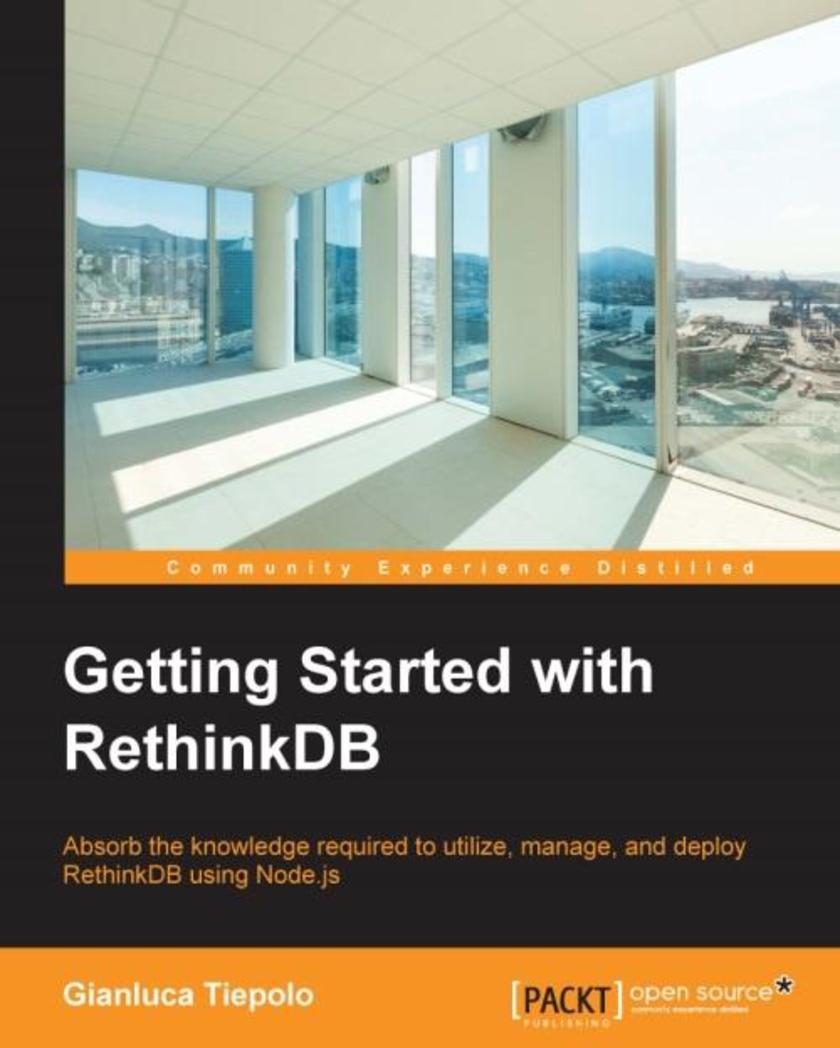
Getting Started with RethinkDB
¥63.21
Absorb the knowledge required to utilize, manage, and deploy RethinkDB using Node.js About This Book Make the most of this open source, scalable database—RethinkDB —to ease the construction of web applications Run powerful queries using ReQL, which is the most convenient language to manipulate JSON documents with Develop fully-fledged real-time web apps using Node.js and RethinkDB Who This Book Is For Getting Started with RethinkDB is ideal for developers who are new to RethinkDB and need a practical understanding to start working with it. No previous knowledge of database programming is required, although a basic knowledge of JavaScript or Node.js would be helpful. What You Will Learn Download and install the database on your system Configure RethinkDB’s settings and start using the web interface Import data into RethinkDB Run queries using the ReQL language Create shards, replicas, and RethinkDB clusters Use an index to improve database performance Get to know all the RethinkDB deployment techniques In Detail RethinkDB is a high-performance document-oriented database with a unique set of features. This increasingly popular NoSQL database is used to develop real-time web applications and, together with Node.js, it can be used to easily deploy them to the cloud with very little difficulty. Getting Started with RethinkDB is designed to get you working with RethinkDB as quickly as possible. Starting with the installation and configuration process, you will learn how to start importing data into the database and run simple queries using the intuitive ReQL query language. After successfully running a few simple queries, you will be introduced to other topics such as clustering and sharding. You will get to know how to set up a cluster of RethinkDB nodes and spread database load across multiple machines. We will then move on to advanced queries and optimization techniques. You will discover how to work with RethinkDB from a Node.js environment and find out all about deployment techniques. Finally, we’ll finish by working on a fully-fledged example that uses the Node.js framework and advanced features such as Changefeeds to develop a real-time web application. Style and approach This is a step-by-step book that provides a practical approach to RethinkDB programming, and is explained in a conversational, easy-to-follow style.
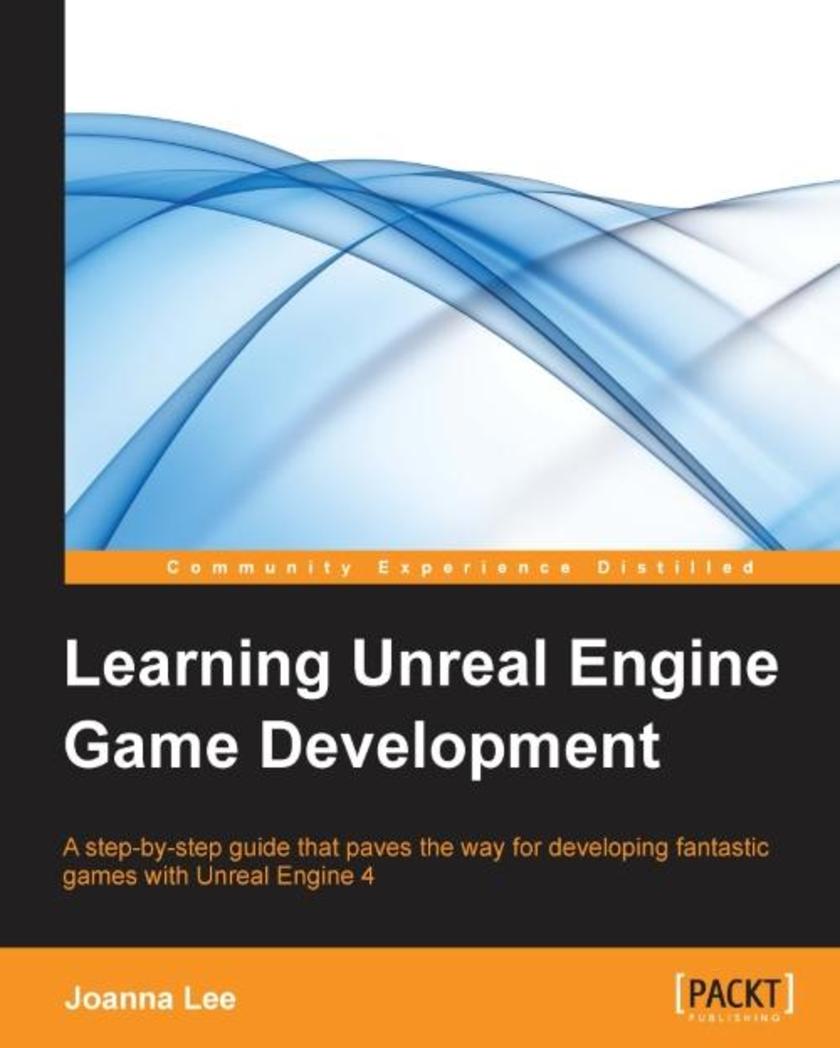
Learning Unreal Engine Game Development
¥80.65
A step-by-step guide that paves the way for developing fantastic games with Unreal Engine 4About This BookLearn about game development and the building blocks that go into creating a gameA simple tutorial for beginners to get acquainted with the Unreal Engine architectureLearn about the features and functionalities of Unreal Engine 4 and how to use them to create your own gamesWho This Book Is ForIf you are new to game development and want to learn how games are created using Unreal Engine 4, this book is the right choice for you. You do not need prior game development experience, but it is expected that you have played games before. Knowledge of C++ would prove to be useful.What You Will LearnLearn what a game engine is, the history of Unreal Engine, and how game studios create gamesExplore the Unreal Engine 4 editor controls and learn how to use the editor to create a room in a game levelUnderstand the basic structures of objects in a game, such as the differences between BSP and static meshesMake objects interactive using level blueprintsLearn more about computer graphics rendering; how materials and light are rendered in your gameGet acquainted with the Material Editor to create materials and use different types of lights in the game levelsUtilize the various editors, tools, and features such as UI, the particle system, audio, terrain manipulation, and cinematics in Unreal Engine 4 to create game levelsIn DetailUnreal Engine 4 is a powerful game development engine that provides rich functionalities to create 2D and 3D games across multiple platforms. Many people know what a game is and they play games every day, but how many of them know how to create a gameUnreal Engine technology powers hundreds of games, and thousands of individuals have built careers and companies around skills developed using this engine.Learning Unreal Engine 4 Game Development starts with small, simple game ideas and playable projects that you can actually finish. The book first teaches you the basics of using Unreal Engine to create a simple game level. Then, you'll learn how to add details such as actors, animation, effects, and so on to the game. The complexity will increase over the chapters and the examples chosen will help you learn a wide variety of game development techniques. This book aims to equip you with the confidence and skills to design and build your own games using Unreal Engine 4. By the end of this book, you'll have learnt about the entire Unreal suite and know how to successfully create fun, simple games.Style and approach This book explains in detail what goes into the development of a game, provides hands-on examples that you can follow to create the different components of a game, and provides sufficient background/theory to equip you with a solid foundation for creating your own games.
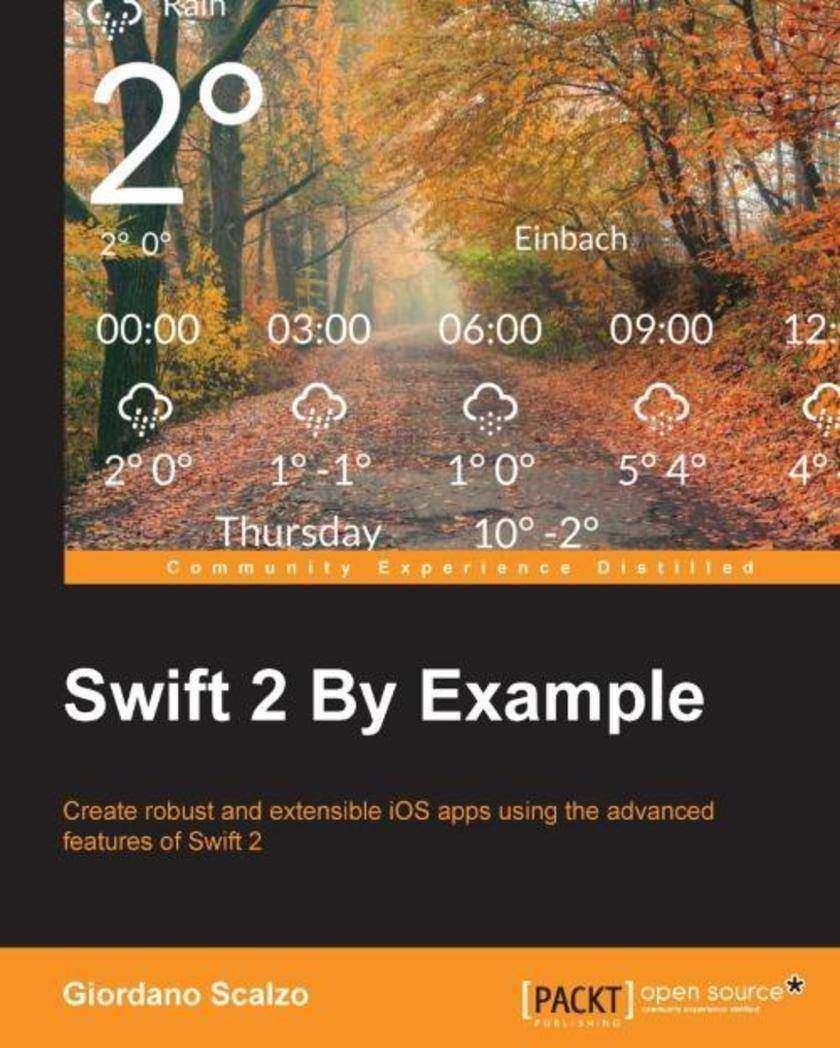
Swift 2 By Example
¥80.65
Create robust and extensible iOS apps using the advanced features of Swift 2 About This Book Get up to speed with the new features of Swift 2 by following the exhaustive examples in this book Specialize in developing real iOS apps, and 2D and 3D videogames using Swift and Cocoapods Learn how to build server API apps to feed your iOS client apps Who This Book Is For This book is ideal for those who want to learn to develop app in Swift, starting the right way. Whether you are an expert Objective-C programmer or are new to this platform, you’ll quickly grasp the code of real world apps, and discover how to use Swift effectively. Prior experience in development for Apple devices would be helpful, but is not mandatory. What You Will Learn Create a server in Swift to deliver JSON data to an iOS app Take advantage of Cocoapods to use third-party libraries Use a clean and effective architecture to decrease complexity and speed up development Take advantage of the most useful parts of the iOS SDK Build games with SpriteKit and SceneKit Develop an app running on the cloud to act as an API server for your client’s apps In Detail Swift is no longer the unripe language it was when launched by Apple at WWDC14, now it’s a powerful and ready-for-production programming language that has empowered most new released apps. Swift is a user-friendly language with a smooth learning curve; it is safe, robust, and really flexible. Swift 2 is more powerful than ever; it introduces new ways to solve old problems, more robust error handling, and a new programming paradigm that favours composition over inheritance. Swift 2 by Example is a fast-paced, practical guide to help you learn how to develop iOS apps using Swift. Through the development of seven different iOS apps and one server app, you’ll find out how to use either the right feature of the language or the right tool to solve a given problem. We begin by introducing you to the latest features of Swift 2, further kick-starting your app development journey by building a guessing game app, followed by a memory game. It doesn’t end there, with a few more apps in store for you: a to-do list, a beautiful weather app, two games: Flappy Swift and Cube Runner, and finally an ecommerce app to top everything off. By the end of the book, you’ll be able to build well-designed apps, effectively use AutoLayout, develop videogames, and build server apps. Style and approach These easy-to-follow tutorials show you how to build real-world apps. The difficulty and complexity level increases chapter by chapter. Each chapter is dedicated to build a new app, beginning from a basic and unstyled app through to a full 3D game. The last two chapters show you how to build a complete client-server ecommerce app right from scratch.




 购物车
购物车 个人中心
个人中心



